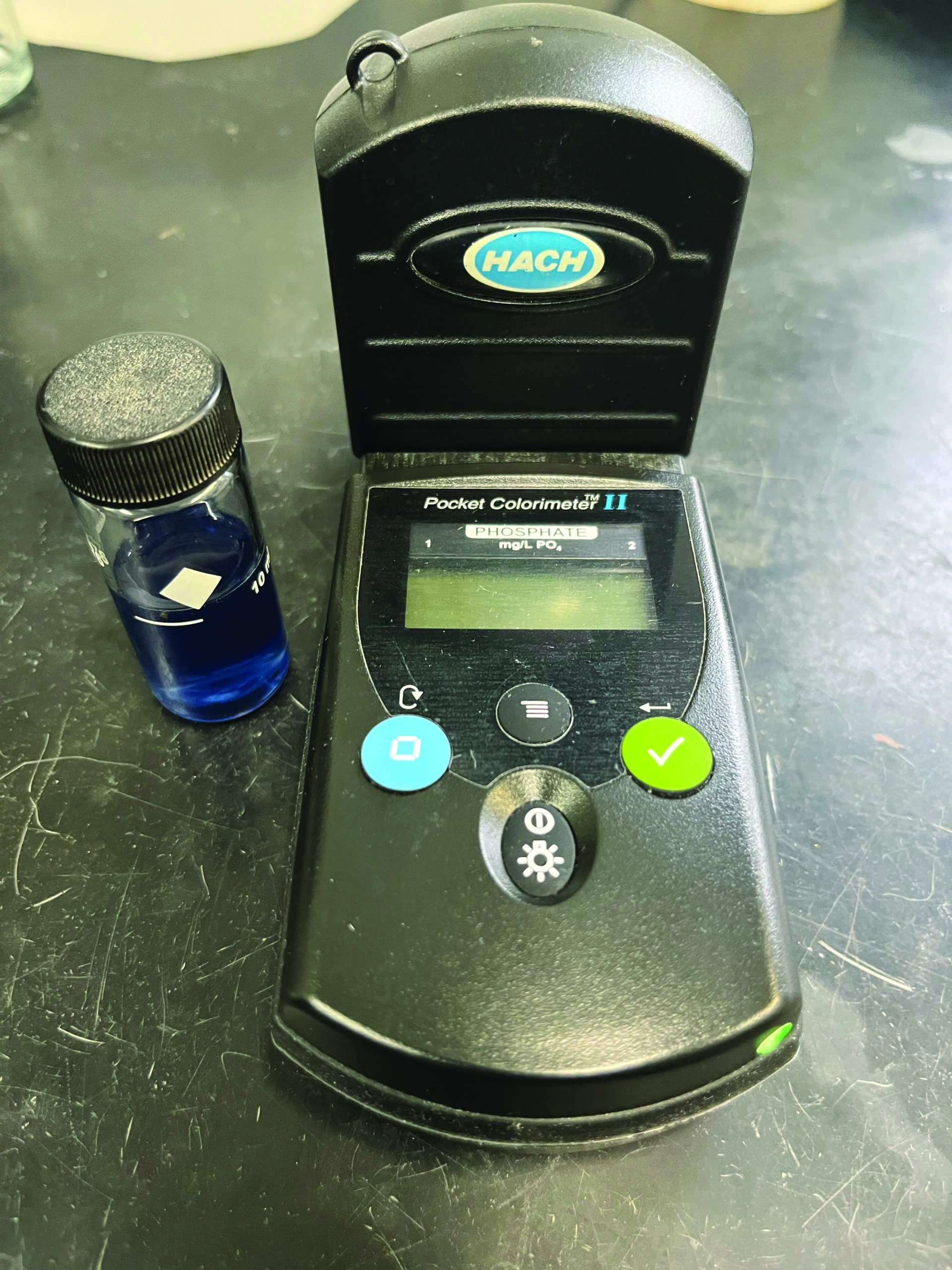by Elijah Lemieux
This article was published in the winter 2023-2024 issue of our newsletter.
Most of our wastewater treatment facilities are required to report effluent total phosphorus (TP) levels with their monthly reporting. While orthophosphate (OP) levels aren’t required to be reported regularly, there is good reason to frequently test them, as well.

A colorimeter is an inexpensive way to test for orthophosphate on site.
It’s important to understand the difference between the two tests and the information they provide. Total phosphorous (TP) measures both dissolved and particulate phosphorus in wastewater. It involves a more complex and time-consuming method of testing, requiring more equipment and the process of digestion. Many facilities send their samples out to contracted labs for TP analysis.
Orthophosphate (OP) measures only dissolved phosphorus, the most bioavailable form of phosphorus in wastewater. It is an incomplete but helpful survey of the phosphorus levels in a sample. OP levels are therefore not a direct measure of TP levels and can serve as an indicator only. OP can be tested in-house using relatively inexpensive equipment and a simple procedure.
Why Test Orthophosphate?
OP testing gives quick results and is an easy way to get real-time data on the phosphorus levels in your treatment process. Having this information can help you optimize treatment and identify process problems quickly and efficiently. Here are several ways you could use OP testing:
- Regularly test your effluent to detect rises in OP which could indicate or predict trends in TP.
- Test at different locations in the treatment process during varying conditions to compare how levels and treatment effectiveness changes.
- Test sidestreams returning to your treatment process, such as the liquid coming from dewatering, sludge supernatant, or filter backwash.
- Test at different locations within your collection system to locate sources of phosphorus.
How to Test OP
Orthophosphate testing is done with a pocket colorimeter which which is easily obtained for a few hundred dollars. The reagents cost well under $1 per test.
To perform an OP test using the colorimetric method, mix a sample with a reagent and then read the colored compound with the colorimeter. It is very much like performing a residual chlorine test.
Wastewater operators can use frequent OP testing to optimize treatment and improve the overall performance of their system. The negligible cost makes OP testing a fiscally responsible way to monitor phosphorus levels more frequently. By using OP testing regularly, wastewater operators can identify and address problems quickly and efficiently, while reducing costs.


